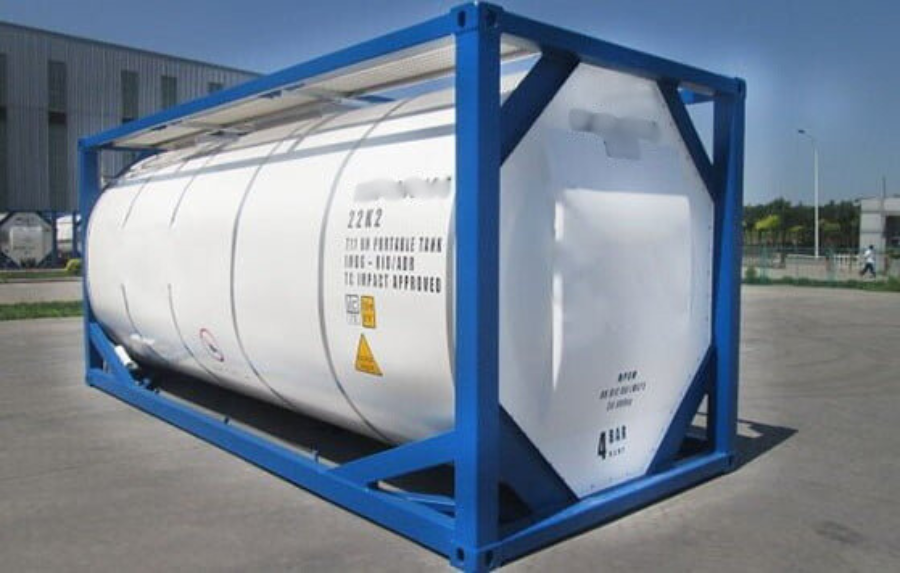ISO Tank Container Software

ISO Tank Container Software
The increasing complexity and global nature of liquid cargo transportation demand a sophisticated solution, prompting the essential need for an ISO tank management system. managing ISO tank containers manually is inefficient and prone to errors, jeopardizing timely deliveries and safety compliance. SeaKnots addresses these challenges by offering a comprehensive solution that ensures real-time visibility, proactive maintenance scheduling, and streamlined inventory tracking. The system’s intuitive features optimize resource allocation, enhance decision-making through data analytics, and bolster overall operational efficiency.
ISO Tank Containers have revolutionized the transportation of liquid cargo, providing a safe, efficient, and reliable solution for industries across the globe. Built to international standards, ISO tank containers offer a flexible and secure means of transporting various types of liquids, including chemicals, food-grade products, and hazardous materials.
Key Features of ISO Tank Container Software
- Real-time Fleet Visibility
- Automated Maintenance Scheduling
- Intuitive Inspection Management
- User-friendly Inventory Tracking
- Comprehensive Data Analytics
- Efficient Resource Allocation
- Seamless Asset Monitoring
- Streamlined Logistics Planning
- Proactive Alert Notifications
- Enhanced Decision-Making Insights
- Dynamic Trend Identification
- Secure Compliance Monitoring
- Flexible Container Availability
- Environmentally Friendly Operations
- Innovative Cost Reduction Strategies

What is ISO Tank Container Management Software?
An ISO tank management solution is a comprehensive software system designed to optimize the handling, tracking, and maintenance of ISO tank containers used in the transportation of liquids and gasses. It provides real-time visibility, automates maintenance processes, ensures regulatory compliance, and enhances overall operational efficiency in the liquid cargo logistics industry.
SeaKnots ISO tank management solution is a cutting-edge technology designed to meet the dynamic demands of tank container operations. With a focus on NVOCC expertise, scalability, and security, SeaKnots offers features like real-time tracking, intuitive maintenance scheduling, streamlined inventory management, and robust data analytics. This solution empowers organizations to make informed decisions, reduce downtime, and elevate their efficiency in the transportation of liquid cargo.
Benefits of ISO Tank Container Software

Enhanced Fleet Control with Real-Time Visibility
SeaKnots, provide advanced tracking and monitoring features. This ensures that businesses can maintain complete control over their ISO container operation. Real-time visibility into the location, status, and condition of each container facilitates proactive decision-making, timely deliveries.

Optimized Maintenance and Inspection Processes
Inspection management module offered by SeaKnots solution enables effortless scheduling of routine maintenance and regulatory inspections. By proactively managing maintenance schedules and receiving automated alerts for upcoming inspections, businesses can prevent costly downtime, extend the lifetime of ISO tanks.

Efficient Inventory and Asset Management
SeaKnots ISO tank management solution seamlessly integrates user-friendly inventory management tools. This feature allows businesses to keep track of container inventory and assets with ease. Efficient monitoring of container availability, along with the ability to allocate resources effectively, helps prevent stockouts.

Informed Decision-Making Through Data Analytics
SeaKnots emphasizes data analytics and reporting tools that empower businesses to make informed decisions. This data-driven approach enhances overall decision-making processes, enabling businesses to adapt to market dynamics and improve the profitability of their ISO container management efforts.








Why Choose Us
SeaKnots for ISO Tank Container Management
At SeaKnots, we bring innovation to the forefront, delivering a comprehensive technology solution designed for tank container operators, leasing companies, and depots. Our commitment to NVOCC expertise, scalability, and unwavering security and compliance sets us apart. Say goodbye to manual hassles and uncertainty – SeaKnots is your ticket to streamlined operations, data-driven decisions, and increased profitability. Join us in shaping the future of ISO tank management.
- NVOCC Expertise
- Comprehensive Functionality
- Innovation
- Scalability
- Security and Compliance
Manage Tank Containers Hassle-Free with SeaKnots
Latest Blog Updates
Freight Forwarding Software: What’s New, and What’s Next?
Freight forwarding digital tools are always meant to find the leanest root to conduct efficient
ISO containers are efficient tanks that help enhance safety and improve the overall supply chain
Nowadays, Container Tracking Software is in demand as it provides all-round technology solutions to businesses. You can
Take Control of Your Fleet With ISO Tank Container Software
Schedule a Personalized Demo Today!
- +91 95000 03171
- sales@seaknots.in


